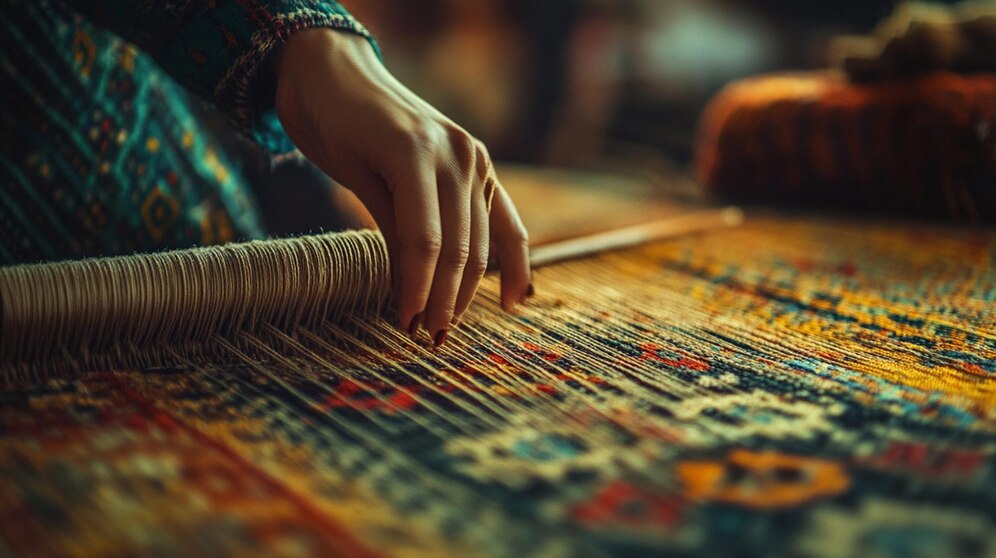The word Tissariss is more than a simple label. It represents an intricate and vibrant tradition that blends centuries-old craftsmanship with contemporary design. Steeped in history, Tissariss is a testament to the enduring art of weaving, where every thread intertwines to create not just fabrics, but stories. This art form, which has been passed down through generations, reflects both cultural heritage and creative innovation.
In today’s world, Tissariss is making waves globally, captivating hearts with its rich textures, unique patterns, and the unparalleled skill of the artisans who breathe life into each creation. Whether you are an enthusiast of traditional crafts or someone intrigued by modern design, Tissariss offers a fascinating look into the world of weaving that harmoniously blends the past with the future.
The Origins of Tissariss: Where Tradition Meets Art
To truly appreciate Tissariss, one must first understand its roots. This traditional weaving art can be traced back hundreds of years to regions known for their rich textile heritage. Over time, Tissariss has evolved, incorporating influences from various cultures while retaining its core principles of artistry and meticulous craftsmanship.
The name itself evokes a sense of legacy. It is believed that Tissariss originated as a form of storytelling through fabrics. Each woven piece carries a narrative—whether it’s the depiction of local folklore, the celebration of nature, or the expression of community values. As the practice spread, it evolved to incorporate techniques and motifs from different regions, resulting in an incredibly diverse yet cohesive art form.
The Evolution of Techniques
At the heart of Tissariss lies the use of age-old techniques passed down through generations of skilled weavers. These techniques have evolved over centuries, blending tradition with innovation. Each region that practices Tissariss has developed its unique style of weaving, often defined by specific tools, patterns, or methods.
One of the key features of Tissariss is its hand-weaving process. Unlike modern textile production, which relies heavily on machinery, Tissariss preserves the art of manual weaving. The intricate designs that are created require immense skill, patience, and precision. Weavers use specialized looms, carefully threading each fiber to form stunning patterns that reflect the natural world, mythological stories, or abstract forms.
Through generations, artisans have found ways to experiment and innovate while respecting traditional methods. The result is a craft that continues to thrive in the modern world, with both ancient techniques and contemporary styles finding a place in Tissariss.
Cultural Significance of Tissariss: A Thread of Identity
Tissariss is not just an art form—it is a reflection of cultural identity and heritage. For many communities, weaving has long been a way to express their connection to history, geography, and social values. Each Tissariss piece represents more than aesthetic beauty; it embodies the traditions, stories, and beliefs of the people who create it.
Weaving Communities Together
Throughout history, the practice of Tissariss has been a communal activity. In many villages and towns, weaving served as a social function, with communities gathering to share stories, pass down knowledge, and celebrate their craftsmanship. It wasn’t just a profession but a way of life—woven into the very fabric of the community itself.
Artisans often draw inspiration from their surroundings, whether it be the natural landscape or the tales passed down through generations. As a result, each region has its distinct style and motifs that represent the local environment and culture. Nature-inspired patterns, geometric shapes, and intricate storytelling elements often find their way into Tissariss designs, creating pieces that are as meaningful as they are beautiful.
Storytelling Through Fabrics
One of the most fascinating aspects of Tissariss is how it serves as a medium for storytelling. Each piece of fabric tells a story—whether it’s about a significant event, a mythical creature, or a personal journey. These woven narratives can range from simple representations to highly complex and symbolic designs, each holding deep meaning.
For example, many Tissariss patterns incorporate natural elements like flowers, rivers, and animals, symbolizing harmony with nature. Others may feature abstract or geometric shapes that represent the cosmos or spiritual beliefs. Through these designs, artisans preserve their history and share it with future generations, ensuring that their cultural stories live on.
The Modern Renaissance of Tissariss: Embracing Innovation
As the world becomes more connected, Tissariss is experiencing a modern renaissance. While the core principles of tradition remain, the art form is being revitalized by contemporary designers and artisans who are reinterpreting classic designs and techniques to appeal to a global audience.
Blending Old and New
One of the hallmarks of the Tissariss revival is the fusion of old and new. Modern artisans are experimenting with innovative materials, bold colors, and fresh patterns while maintaining the traditional methods of hand-weaving. This fusion of tradition and innovation has opened up new possibilities, allowing Tissariss to transcend its historical boundaries and reach audiences around the world.
Additionally, advances in textile technology have introduced new ways of working with fibers and dyes. While the essence of Tissariss remains rooted in its traditional practices, these technological advancements have expanded the range of colors, textures, and finishes available to artisans.
A Growing Global Appeal
The resurgence of Tissariss in the modern fashion and design industries has also contributed to its global appeal. Designers and consumers alike are drawn to the uniqueness and authenticity of handcrafted Tissariss textiles. The slow, labor-intensive process of creating each piece stands in stark contrast to the mass production of modern fast fashion, giving Tissariss an added sense of value and sustainability.
As a result, Tissariss has found its place in high-end fashion, interior design, and art galleries, where it is celebrated for its artistry and craftsmanship. More than just a fabric, Tissariss is now seen as a statement of individuality and a way to connect with the rich history of textile arts.
The Artisans Behind Tissariss: Guardians of Tradition
At the heart of Tissariss are the artisans—skilled weavers who have dedicated their lives to mastering the craft. For many of these artisans, weaving is not just a job but a calling. They are the guardians of tradition, tasked with preserving the techniques, patterns, and stories that define Tissariss.
Passing Down the Craft
One of the most remarkable aspects of Tissariss is the way it is passed down through generations. Many artisans begin learning the craft from a young age, often taught by their parents or grandparents. This intergenerational transfer of knowledge ensures that the skills and techniques of Tissariss are preserved, even as the world around it changes.
The Artisan’s Process
The creation of a Tissariss piece is a meticulous and time-consuming process that requires immense skill and dedication. Artisans begin by selecting the finest materials, such as cotton, silk, or wool. These fibers are carefully prepared and dyed, often using natural dyes derived from plants, minerals, and insects.
Once the materials are ready, the weaver sets up the loom and begins the intricate process of hand-weaving. Each thread is carefully placed, and the artisan pays close attention to the pattern, ensuring that every detail is perfect. This attention to detail is what gives Tissariss its distinct character and beauty.
Celebrating the Artisan
In recent years, there has been a growing movement to celebrate and support the artisans behind Tissariss. As consumers become more aware of the importance of preserving traditional crafts, there is increasing recognition of the skill and effort that goes into creating each Tissariss piece.
By supporting Tissariss artisans, consumers can help sustain these ancient crafts and ensure that future generations will continue to enjoy and learn from this rich cultural heritage.
Sustainability and Tissariss: Weaving a Greener Future
As the world grapples with environmental challenges, there is a growing focus on sustainability in all industries—including textiles. Tissariss offers a sustainable alternative to mass-produced fabrics, with its emphasis on handcrafted, slow production methods.
Natural Materials and Dyes
One of the key reasons Tissariss is considered sustainable is its use of natural materials and dyes. Traditional Tissaris’s artisans often work with locally sourced fibers such as cotton, wool, and silk, which are biodegradable and have a lower environmental impact compared to synthetic materials.
Similarly, the use of natural dyes made from plants, minerals, and insects is a more eco-friendly option than synthetic dyes, which can be harmful to the environment.
Supporting Ethical Production
Tissaris’s also aligns with the principles of ethical production. By purchasing Tissaris’s textiles, consumers can support small-scale artisans and communities that rely on traditional craftsmanship for their livelihoods. This helps promote fair wages, safe working conditions, and the preservation of cultural heritage.
Conclusion
As we’ve explored, Tissaris’s is more than just a textile—it’s a living, breathing art form that connects the past with the present. From its roots in traditional weaving techniques to its modern-day resurgence, Tissaris’s continues to captivate with its rich history, cultural significance, and artistic innovation.
Whether you’re drawn to Tissaris’s for its intricate patterns, its sustainable production methods, or the stories woven into every piece, it’s clear that this ancient craft has a bright future ahead. As more people around the world discover the beauty and craftsmanship of Tissariss, the art form will continue to evolve, preserving its legacy for generations to come.











